How to Get a Non-QM Loan with a Chapter 13 Bankruptcy in 2025: Your Complete Guide
If you’ve recently filed for Chapter 13 bankruptcy and are thinking about buying a home, you might feel like your chances of securing a mortgage are slim. However, a non-QM loan (Non-Qualified Mortgage) offers a viable option, especially for individuals with bankruptcy in their past. With the right approach, you can navigate the process and successfully qualify for a mortgage—even after Chapter 13 bankruptcy.
This article will guide you through the steps to secure a non-QM loan after a Chapter 13 bankruptcy in 2025. We’ll discuss how non-QM loans work, the specific challenges you may face, and provide a roadmap for improving your chances of approval. Whether you’ve completed your Chapter 13 plan or are still in it, the strategies in this guide will help you take the next step toward homeownership.
What Is a Chapter 13 Bankruptcy?
Chapter 13 bankruptcy is a form of bankruptcy that allows individuals to reorganize their debt and repay it over time. Unlike Chapter 7 bankruptcy, where assets may be liquidated to pay off creditors, Chapter 13 gives you the chance to keep your property, including your home, and restructure your finances.
A Chapter 13 bankruptcy typically lasts three to five years, during which you are required to make monthly payments according to the court-approved repayment plan. Once you’ve completed the plan and your debts have been discharged, you are in a position to move forward financially—though it may take time to rebuild your credit.
What Is a Non-QM Loan?
A Non-QM loan is a mortgage that doesn’t meet the rigid requirements set by the Consumer Financial Protection Bureau (CFPB) for Qualified Mortgages (QM). Qualified mortgages adhere to strict guidelines, including a 43% debt-to-income (DTI) ratio, full income documentation, and verification of employment. These mortgages are often backed by government entities like Fannie Mae or Freddie Mac, which enforce these requirements to ensure that borrowers can repay their loans.
In contrast, non-QM loans are offered by private lenders and do not require borrowers to meet the same strict criteria. They offer greater flexibility, which is ideal for people who may have unique financial circumstances—such as a Chapter 13 bankruptcy.
Why Choose a Non-QM Loan After Chapter 13 Bankruptcy?
While many traditional lenders are hesitant to lend to borrowers who have a bankruptcy in their history, non-QM lenders tend to be more flexible. They understand that Chapter 13 bankruptcy is a tool for financial recovery, and they are willing to consider applicants who are actively working to rebuild their credit and financial stability.
Some reasons why a non-QM loan might be a good option after Chapter 13 bankruptcy include:
1.Flexibility in Income Verification: Non-QM loans may not require the same rigid documentation as traditional loans. If you are self-employed or have non-traditional income sources, you may still qualify.
2.Easier Approval for Lower Credit Scores: While your credit score will be impacted by bankruptcy, non-QM lenders may still approve you with a lower score, offering you the chance to recover your financial standing.
3.Lower Down Payment Options: Some non-QM lenders offer competitive down payment options, which may be lower than what you would need for a traditional loan.
4.Consideration of “Alternative” Financial Factors: Non-QM lenders are more likely to consider factors such as rental history or the successful completion of your Chapter 13 repayment plan when determining your ability to repay the loan.
If you’re interested in applying for a non-QM loan after Chapter 13 bankruptcy, check out Forever Home Financing for expert assistance in finding the right loan product for your unique situation.
Steps to Qualify for a Non-QM Loan After Chapter 13 Bankruptcy in 2025
Getting approved for a non-QM loan after Chapter 13 bankruptcy is possible, but there are several steps you’ll need to follow to increase your chances of success.
1. Wait for Your Chapter 13 Bankruptcy to Be Discharged
One of the most important factors in securing a non-QM loan after Chapter 13 bankruptcy is ensuring your bankruptcy has been discharged. A discharge means that you’ve successfully completed the repayment plan, and the court has cleared your remaining eligible debt.
Non-QM lenders typically prefer that you wait for at least 12 months after discharge before applying for a loan. This allows time for you to demonstrate your financial recovery and stability. Some lenders may require a longer waiting period, depending on their underwriting guidelines.
2. Rebuild Your Credit Score
After a Chapter 13 bankruptcy, your credit score will be affected, but it doesn’t have to remain low forever. Rebuilding your credit is one of the most important things you can do to improve your chances of qualifying for a non-QM loan.
Here are some steps to help rebuild your credit:
•Pay all bills on time: Timely payments show lenders that you can manage your finances responsibly.
•Use a secured credit card: A secured card allows you to borrow against a deposit you make. Use it responsibly to rebuild your credit history.
•Check your credit report for errors: Errors on your credit report can drag down your score. Regularly review it and dispute any inaccuracies.
•Keep credit utilization low: Aim to use less than 30% of your available credit to show that you’re not over-leveraged.
While non-QM lenders are typically more lenient than traditional lenders, having a higher credit score will improve your chances of securing a better interest rate and terms.
3. Ensure Steady, Documented Income
Non-QM lenders want to know that you have a reliable income to cover your mortgage payments. After Chapter 13 bankruptcy, it’s critical that you demonstrate stable, documented income for at least one year (preferably longer).
If you are employed, this documentation will include:
•Pay stubs from your employer.
•Tax returns from the previous two years.
•Bank statements showing deposits from your employer.
If you’re self-employed, you will need to provide additional documentation, such as:
•Profit and loss statements.
•Business tax returns.
•Bank statements that reflect business income.
By keeping thorough and accurate records, you can increase the likelihood that a lender will approve your non-QM loan application.
4. Manage Your Debt-to-Income (DTI) Ratio
Your debt-to-income (DTI) ratio is a key factor in determining how much you can borrow. This ratio compares your monthly debt obligations to your monthly income. While qualified mortgages (QM) impose a hard limit of 43% for the DTI ratio, non-QM loans can be more flexible, though most lenders will still prefer to see a DTI ratio below 50%.
To reduce your DTI ratio:
•Pay down outstanding debt (such as credit cards, car loans, etc.).
•Avoid new debt while you work toward your home purchase.
•Consider a larger down payment to reduce the loan amount and make it easier to qualify.
By managing your debts effectively, you demonstrate to lenders that you can comfortably manage a new mortgage payment.
5. Save for a Larger Down Payment
While non-QM loans are more flexible in terms of credit score and DTI ratio, a larger down payment will always improve your chances of approval. Many non-QM lenders will ask for a down payment of at least 20% or more, especially if you’ve recently completed a Chapter 13 bankruptcy.
A larger down payment reduces the lender’s risk and may help you qualify for a better loan product. It also demonstrates your commitment to homeownership and financial stability.
6. Work with a Non-QM Loan Specialist
Given the unique nature of non-QM loans, working with a mortgage broker who specializes in this type of loan can be beneficial. These brokers have access to a network of lenders who are more willing to work with borrowers who have filed for bankruptcy.
At Forever Home Financing, our experienced team specializes in non-QM loans and can help guide you through the process of securing a mortgage after Chapter 13 bankruptcy. We understand the challenges you face and can connect you with lenders who are more flexible and understanding of your unique financial situation.
7. Explore Alternative Lenders
Non-QM loans are typically issued by private lenders, not government-backed entities like Fannie Mae or Freddie Mac. Because these lenders are not bound by the same strict rules as traditional mortgage lenders, they have the flexibility to consider applicants with a bankruptcy in their history.
It’s essential to shop around and explore multiple lenders to find the best deal for your situation. Forever Home Financing offers a wide range of non-QM loan options and is committed to helping individuals in Chapter 13 bankruptcy secure the financing they need.
Tips to Increase Your Chances of Getting Approved for a Non-QM Loan
•Be upfront about your bankruptcy: Transparency is crucial when applying for a non-QM loan. Provide your bankruptcy discharge papers and explain how you’ve rebuilt your financial standing.
•Have a co-signer: If your credit score or financial situation is still recovering, a co-signer with strong credit can help increase your chances of approval.
•Show your commitment to homeownership: By demonstrating that you’ve consistently made payments under your Chapter 13 plan, you prove your ability to manage financial commitments.
•Work with an experienced mortgage broker: A mortgage broker who specializes in non-QM loans can help you find the best lender for your needs.
Conclusion
Securing a non-QM loan after a Chapter 13 bankruptcy is entirely possible in 2025. By following the steps outlined in this guide—rebuilding your credit, managing your debt, saving for a down payment, and working with a lender who understands your financial situation—you can successfully apply for a mortgage.
If you’re ready to explore your non-QM loan options, Forever Home Financing is here to help. Our team specializes in helping borrowers like you secure financing even after Chapter 13 bankruptcy. Contact us today to get started on your path to homeownership!
For more information on non-QM loans and how to get started, visit Forever Home Financing.

